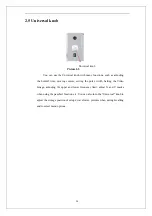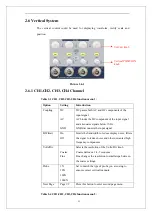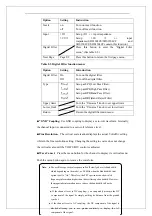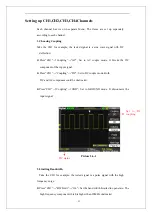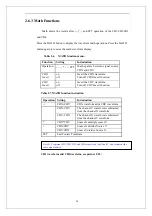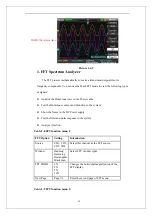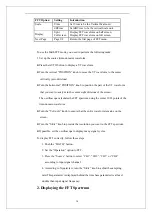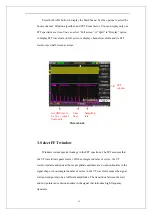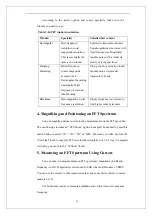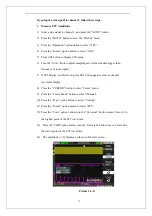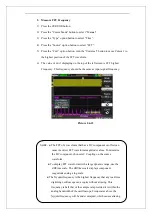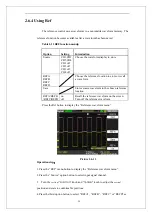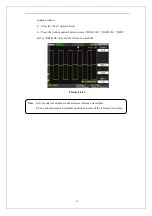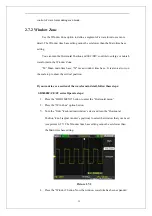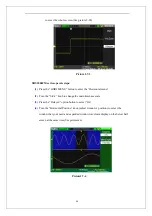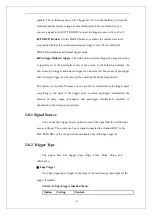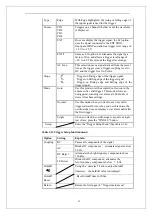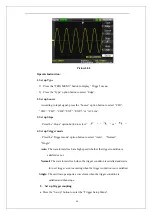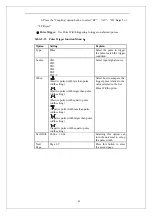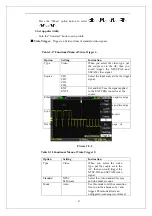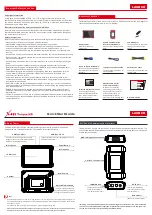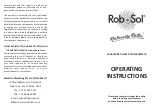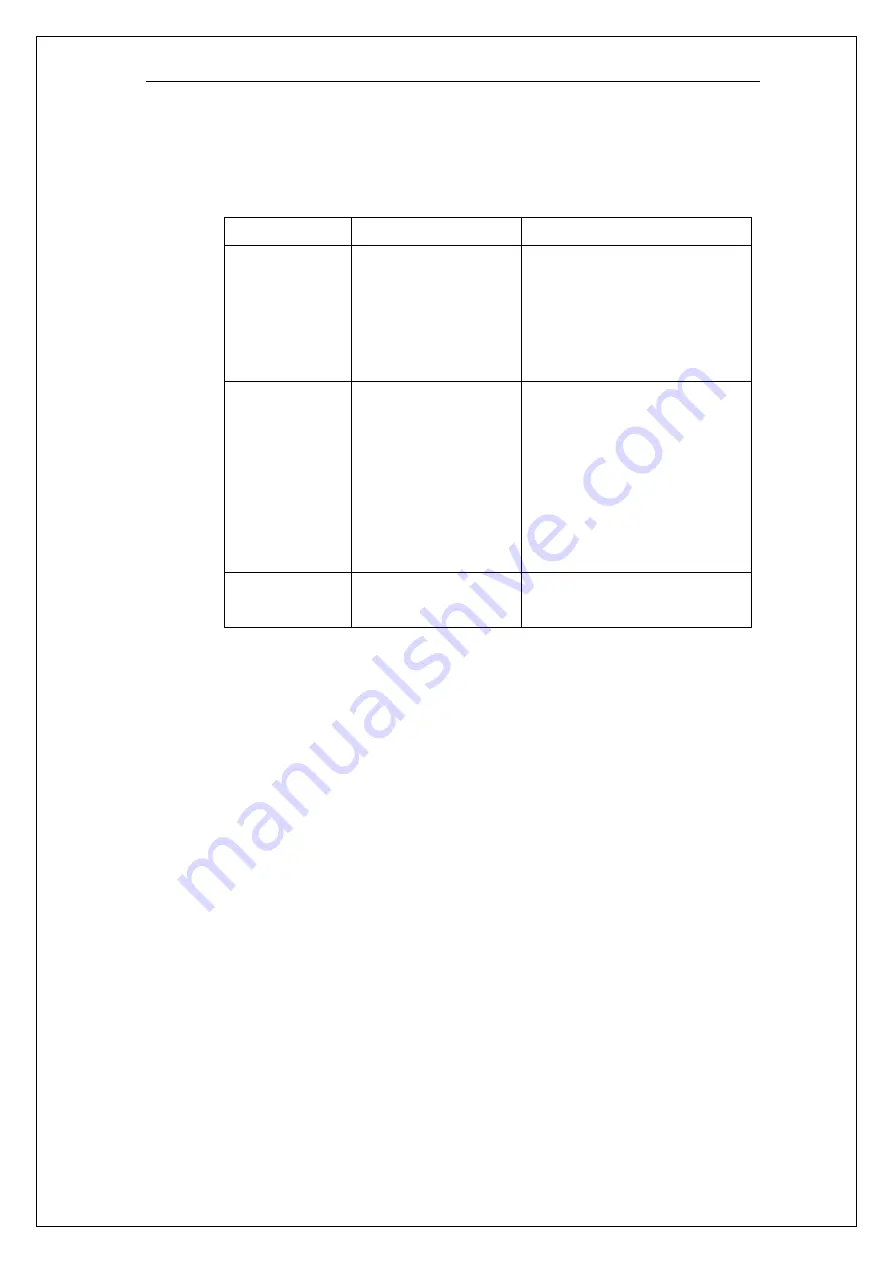
32
According to the tested options and source speciality, make sure the
window you need to use.
Table 2-10 FFT window instruction
Window
Speciality
Satisfied Test content
Rectangular
Best frequency
resolution, worst
magnitude resolution.
This is essentially the
same as no window.
Symmetric transients or bursts.
Equal-amplitude sine waves with
fixed frequencies. Broadband
random noise with a relatively
slowly varying spectrum.
Hanning
Hamming
Better frequency,
poorer magnitude
accuracy than
Rectangular. Hamming
has slightly better
frequency resolution
than Hanning.
Sine, periodic, and narrow-band
random noise. Asymmetic
transients or bursts.
Blackman
Best magnitude, worst
frequency resolution.
Single frequency waveforms, to
find higher order harmonics.
4.
Magnifying and Positioning an FFT Spectrum
You can magnify and use cursors to take measurements on the FFT spectrum.
The oscilloscope includes an “FFT Zoom” option to magnify horizontally, press this
option button to select “1X”, “2X”, “5X” or “10X”. Moreover, you also can turn the
“Universal” knob to magnify FFT waveform horizontally in a 1-2-5 step. To magnify
vertically; you can turn the “Volts/div” knob.
5. Measuring an FFT Spectrum Using Cursors
You can take two measurements on FFT spectrums: magnitude (in dB) and
frequency (in Hz). Magnitude is referenced to 0 dB, where 0 dB equals 1 VRMS.
You can use the cursors to take measurements at any zoom factor. (Refer to cursor
measure2.11.2)
Use horizontal cursors to measure amplitude and vertical cursors to measure
frequency.
Summary of Contents for SDS1000 Series
Page 146: ...138 Coupling DC...



